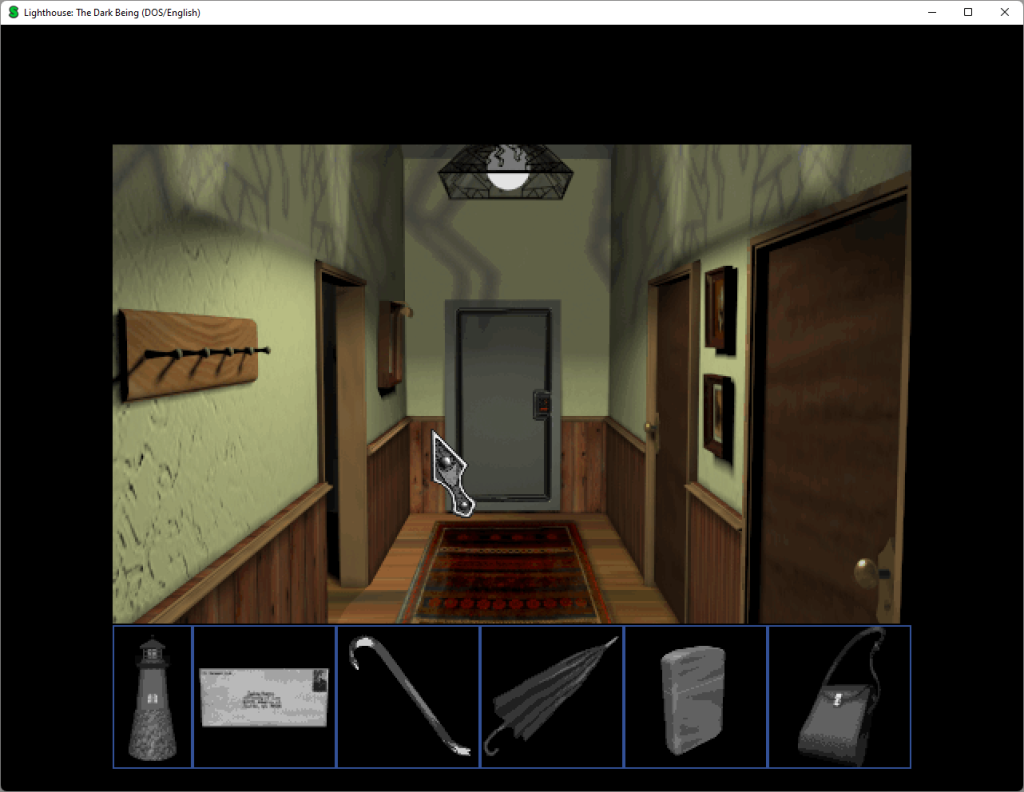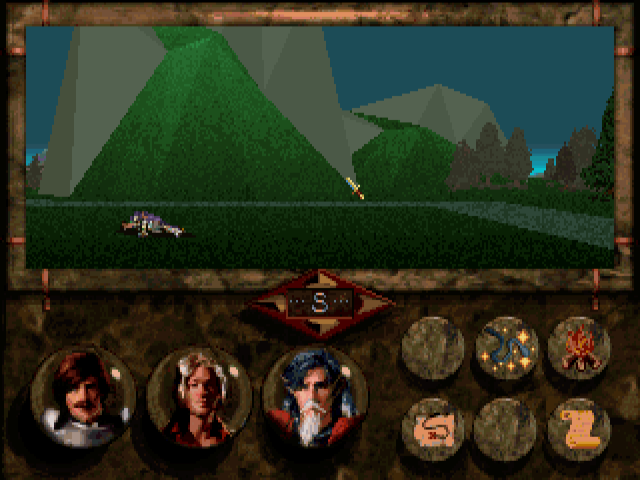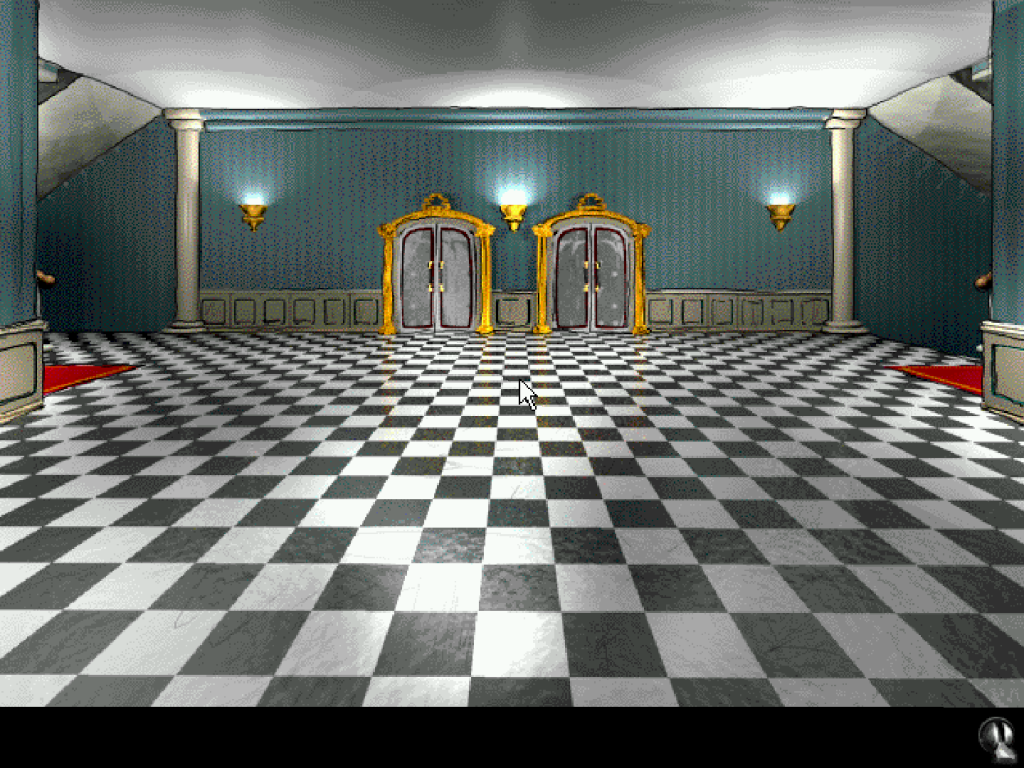At the time of writing, the world is going crazy for Elden Ring. I’m sure that, at some point, I’ll be picking it up too eventally (I have my reason for not buying it yet, some of which may or may not be related to the fact that I’m a cheapskate). Until then, I decided to try my hands at From Software’s older and lesser known output, specifically Eternal Ring and Shadow Tower. I’ll spare you my opinion on those games at the moment, they may yet end up in another blog post. Instead, I wanted to rant a bit about what I see as a point of difference between Japan and the West in the 90’s: the technology, especially for adventure games.
Games from the nineties tend to be vastly different depending on which side of the ocean you are looking at. America and Europe were quite big on PC games, and both Sierra (before) and Lucasarts (after) influenced many a developers. But perhaps neither were as big as Myst, which went on to become a massive success story, and spawned an entire subtype of Myst clones – a genre that still goes on today, though usually not with static screens anymore. I’m guessing a 3D game is actually easier nowadays than one with 360 degrees panorama points. Not that those don’t exist anymore, look for example at Darkling Room’s Ghost Vigil.

Japan was probably bigger on consoles, and not so big on PC games. As a result, when the PS1 and Saturn came out, it was a race to utilize their amazing new 3D capabilities. Since we are still in the topic of From Software, who can forget King’s Field? That was more of an RPG… eventually, however, adventures started appearing too. My usual favorites: Echo Night, Iblard, Enemy Zero. All of them presented in true 3D.

The distinction between both types of graphical approach here is quite obvious. Games like The 7th Guest and Myst looked impressive, but they were clearly static. Press the mouse, move to the next hotspot. Echo Night, on the other hand, is in 3D and gives you total freedom, but it sure looks very rough in comparison. This distinction doesn’t just stop at adventure games, either.

I’m thinking that the reason for this is due to both different influences and different hardware. As I said before, the Western market was fairly big on PCs. And until the arrival of graphics accelerators, PCs weren’t all that good at 3D stuff. Mind, they weren’t all that good at fast-paced 2D stuff either (rough deal, uh?). This might have been part of the reason for the massive number of Eye of the Beholder clones out there, even when Japanese developers were starting to deal with true 3D dungeons. Mind, you could argue that Ultima Underworld did it even earlier – but that game was a system hog, and later Wolfenstein 3D and especially Doom found far bigger success on computers. It’s possible, then, that developers started seeing faux-3D styles to be more useful for fast-paced shooters and their ilk, though Might and Magic and Elder Scrolls at least eventually did the same for RPGs. Rare examples of 3D adventures from the era (Normality?) have remained mere curiosities. Plus, it wasn’t even real 3D. For that, the earliest game that comes to my mind is realMyst, released in 2000. Quite a long time to wait.
I mentioned Myst. Of course, a bunch of static images must have been a lot easier to handle than anything in real 3D – and they looked a lot better too. If you consider the level of true 3D graphics throughout the years, it would take a very, very long time before anyone made anything as good-looking as Riven. And when you also consider the massive success of Myst, it’s no surprise that everyone and their grandmas adopted the same style.
Lucasarts and Sierra games were a big deal in the 80’s, and partly through the early 90’s too. Again, another reason to avoid 3D backgrounds. I suspect the success of Alone in the Dark may also be responsible – as developers noticed that fusing 2D backgrounds with 3D models allowed for more details in the formers, and… well, more details in the latters too, since the CPU didn’t have to share its polygons budget with anything else. A character is more dynamic than a background, of course, so the method was viable. And Lucasarts eventually proved that it could be used in pure graphical adventures too. In Japan, Capcom and Square took the same approach for Resident Evil and Final Fantasy, and we all know how successful they were. However, even with the occasional Clock Tower, you were still more likely to find a 3D adventure there.
Unfortunately, I’m not as familiar with what was popular in Japan in those years. It would be interesting to find out more. Visual novels were probably fairly big, while I don’t think Myst clones ever made a huge splash there, though they did have some games like that, with System Sacom adopting the style widely in their portfolio. Mansion of Hidden Souls and Lunacy were effectively the same, though their interface was adapted for consoles. But that type of adventure works better when you aren’t talking to many NPCs… basically the opposite of visual novels.

I also don’t think interactive fiction was ever big in the Japanese market, possibly due to the complexity of the grammar, which would have made the parser a nightmare. Zork 1 did manage to make it work, just barely. It’s a bit of a slog to play though. This might have been a reason why adventures with menus and multiple choices were more popular.
I can’t even tell for sure when the two sides started to converge. In a way, they were never that separated. But at some point, the differences started to disappear. Maybe around the time when full 3D became more convenient than 2D for just about everything, so… the early 360 era? Incidentally, the western adventure market “died” and remained dormat for a while. By the time it reappeared, graphics had already become a lot better.
And at this point, it should be well possible to get a realRiven that looks better than the original. Anyone thinking about it?




